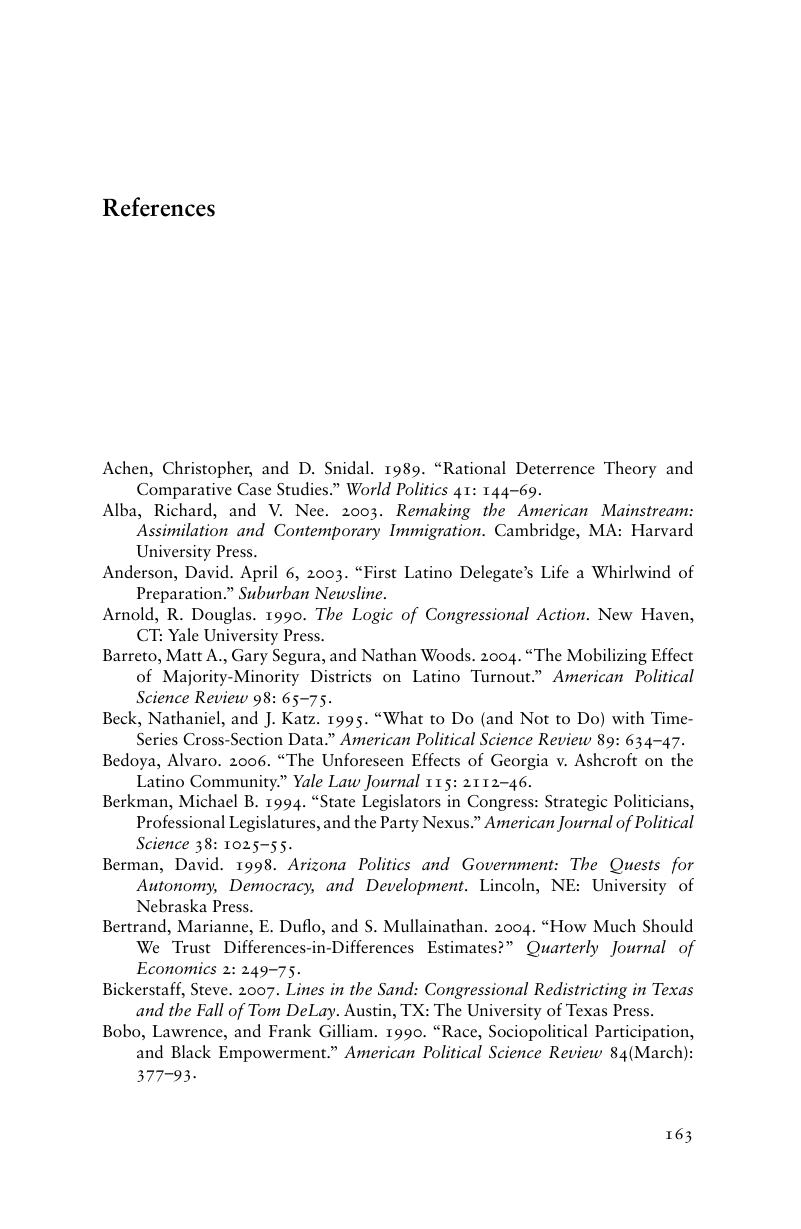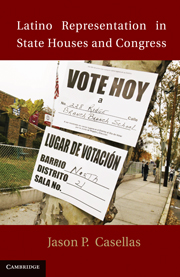Book contents
- Frontmatter
- Contents
- List of Tables
- List of Figures
- Acknowledgments
- Introduction
- 1 Latinos in Legislatures
- 2 The Effects of Population, Turnover, and Term Limits on Latino Representation
- 3 District Composition and the Election of Latino Candidates
- 4 Electing Latinos in Non-Latino Majority Districts
- 5 Voices from Within
- 6 Roll Call Voting Behavior of Latino Legislators
- 7 Conclusion
- Appendix A
- Appendix B
- Appendix C
- Appendix D
- Appendix E
- References
- Index
- References
References
Published online by Cambridge University Press: 10 January 2011
- Frontmatter
- Contents
- List of Tables
- List of Figures
- Acknowledgments
- Introduction
- 1 Latinos in Legislatures
- 2 The Effects of Population, Turnover, and Term Limits on Latino Representation
- 3 District Composition and the Election of Latino Candidates
- 4 Electing Latinos in Non-Latino Majority Districts
- 5 Voices from Within
- 6 Roll Call Voting Behavior of Latino Legislators
- 7 Conclusion
- Appendix A
- Appendix B
- Appendix C
- Appendix D
- Appendix E
- References
- Index
- References
Summary

- Type
- Chapter
- Information
- Latino Representation in State Houses and Congress , pp. 163 - 174Publisher: Cambridge University PressPrint publication year: 2010



